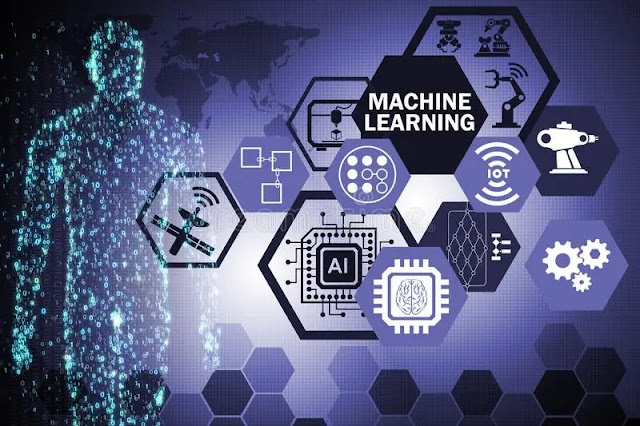Machine learning is expanding quickly and is changing how we live and work. It uses algorithms and statistical models to analyze and understand data, and then make predictions or decisions based on that data.
What is Machine Learning?
Machine learning is a technique for training computers to learn from data rather than explicitly programming them. It entails putting massive volumes of data into computers and enabling the algorithms to recognize patterns and correlations in the data. These correlations can then be utilized to forecast future data.
Types of Machine Learning:
Machine learning is classified into three types: Supervised learning, unsupervised learning, and reinforcement learning.
Supervised Learning:
Supervised learning entails training a machine learning system on a labelled dataset with predictable output. Image categorization and sentiment analysis are two applications of this sort of machine learning.
Unsupervised Learning:
Unsupervised learning entails training a machine learning system on an unlabeled dataset with unknown outcome. This machine learning technique is used for applications like clustering and dimensionality reduction.
Reinforcement Learning:
This is the process of training a machine learning system by trial and error, with the algorithm receiving incentives for successful decisions and punishments for incorrect decisions. This sort of machine learning is used to operate robots and play games.
Applications of Machine Learning:
There are several real world uses for machine learning, including:
- Machine learning algorithms are used to forecast when equipment is likely to break, allowing maintenance to be scheduled preemptively.
- Machine learning algorithms are used in fraud detection to identify suspicious behaviour and prevent fraudulent acts.
- Machine learning algorithms are used to effectively identify and categorize pictures and sounds in image and speech recognition.
- Machine learning algorithms are used in recommendation systems to offer tailored recommendations to users based on their interests and behaviour.
Machine Learning is Transforming Industries:
Machine learning is having a significant influence on a variety of industries, including healthcare, banking, and e-commerce.
Healthcare:
Machine learning is being used in healthcare to evaluate medical pictures such as X-rays and MRI scans to help with diagnosis and treatment recommendations.
- Machine learning algorithms may also be trained on massive quantities of patient data to anticipate outcomes and aid in the development of individualized treatment strategies.
Finance:
Machine learning is being used in finance for purposes such as fraud detection and sales forecasting. Machine learning algorithms can evaluate massive volumes of financial data in real time in order to detect probable fraud and inform financial institutions.
- They may also be trained on previous sales data to estimate sales accurately, which can help with budgeting and resource allocation.
E-commerce:
Machine learning is utilized in e-commerce for tasks such as recommendation systems and pricing optimization. To provide individualized product suggestions, machine learning algorithms can assess user behaviour and preferences.
- They may also be educated using previous sales data to find the best pricing for a product, increasing sales and profits.
Machine Learning Tools:
There are several machine learning tools and libraries available to aid in the development and training of machine learning algorithms. Among the most popular tools and libraries are:
- TensorFlow
- PyTorch
- scikit-learn
- Keras
Each of these tools and libraries has advantages and disadvantages, and the ideal one for your project will be determined by your individual needs.
The Benefits of Machine Learning:
There are several advantages to machine learning, including:
- Machine learning algorithms can evaluate large volumes of data rapidly and correctly, which improves accuracy and efficiency.
- Improved decision-making because machine learning algorithms may detect patterns and links in data that people may not see right away.
- Machine learning algorithms can now execute jobs that would ordinarily require human involvement, resulting in increased automation.
FAQs about Machine Learning:
Q:What is machine learning?
A:Machine learning is a subfield of artificial intelligence that deals with the design and development of algorithms that can learn from data and make predictions or decisions without being explicitly programmed to do so.
Q:What is deep learning?
A:Deep learning is a subfield of machine learning that focuses on artificial neural networks with multiple layers, capable of learning representations of data with multiple levels of abstraction.
Q:What is Overfitting and how can we avoid it?
A:In machine learning, overfitting occurs when a model fits the noise in the training data rather than the underlying pattern. Techniques such as cross-validation, regularization, early halting, dropout, and lowering model complexity can be employed to avoid overfitting.
Q:What is training Set and test Set in a Machine Learning Model?
A:The training set in a machine learning model is a subset of the data used to train the model. The training set is used by the model to understand the relationship between the input characteristics and the target variables.
The test set, on the other hand, is a different subset of the data that is used to evaluate the trained model's performance. The model is put through its paces on the test set to evaluate how well it generalizes to new situations.
Q:How Do You Handle Missing or Corrupted Data in a Dataset?
A:A successful machine learning project requires the handling of missing or damaged data in a dataset.
Missing data may be handled in two ways:
1- Deletion
2- Imputation
Deletion includes eliminating rows with missing data, whereas imputation involves replacing missing values with replacements such as mean or median.
Conclusion:
To summarize, machine learning is a fast expanding science that has transformed numerous industries and applications. It entails using data to train models to make predictions and judgements without being specifically programmed to do so.
Overfitting is a major problem in machine learning, and different approaches to avoid it include cross-validation, regularization, early halting, dropout, and lowering model complexity. Common assessment measures including as accuracy, precision, recall, F1-score, and ROC/AUC are used to assess the performance of a machine learning model.







0 Comments